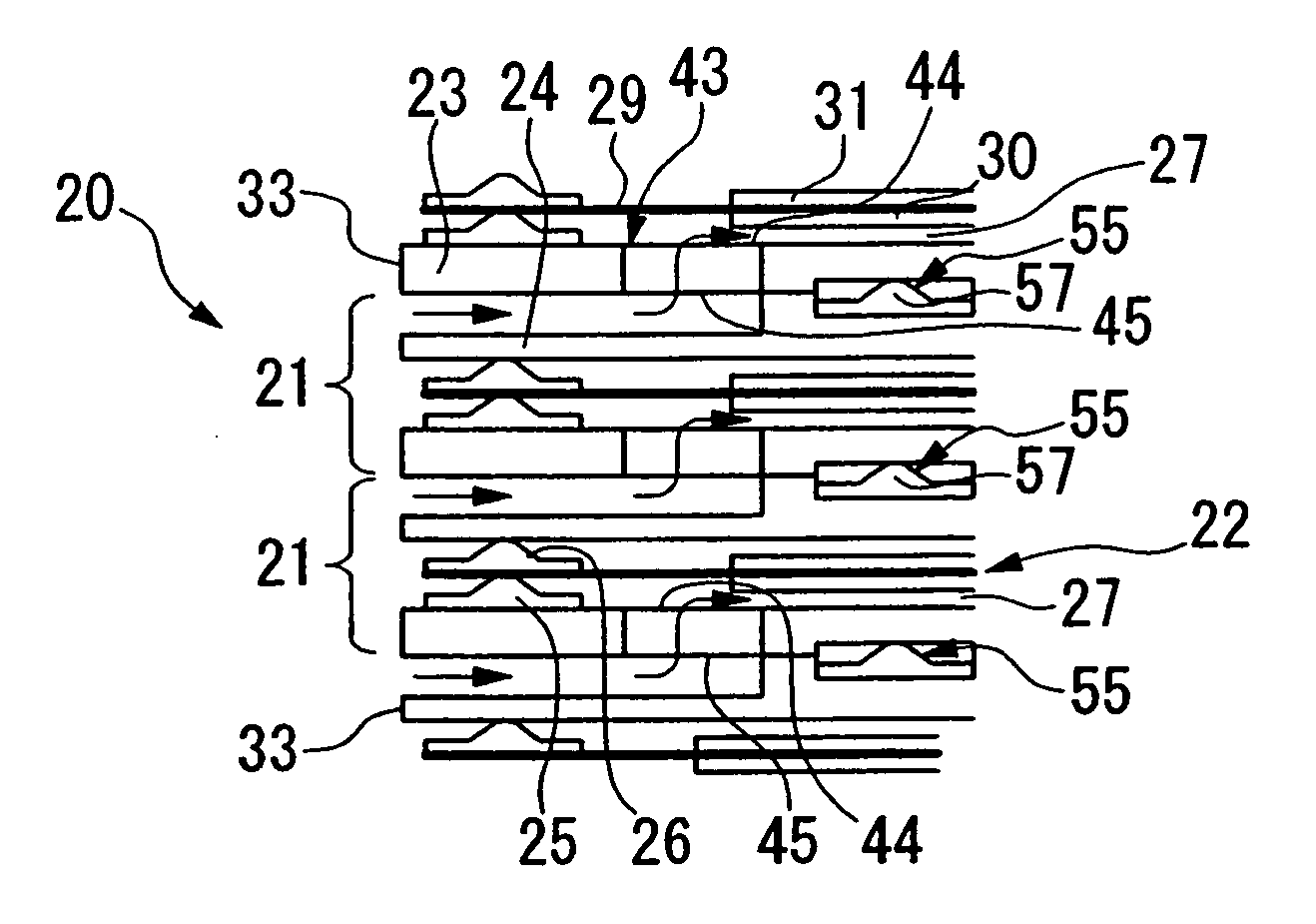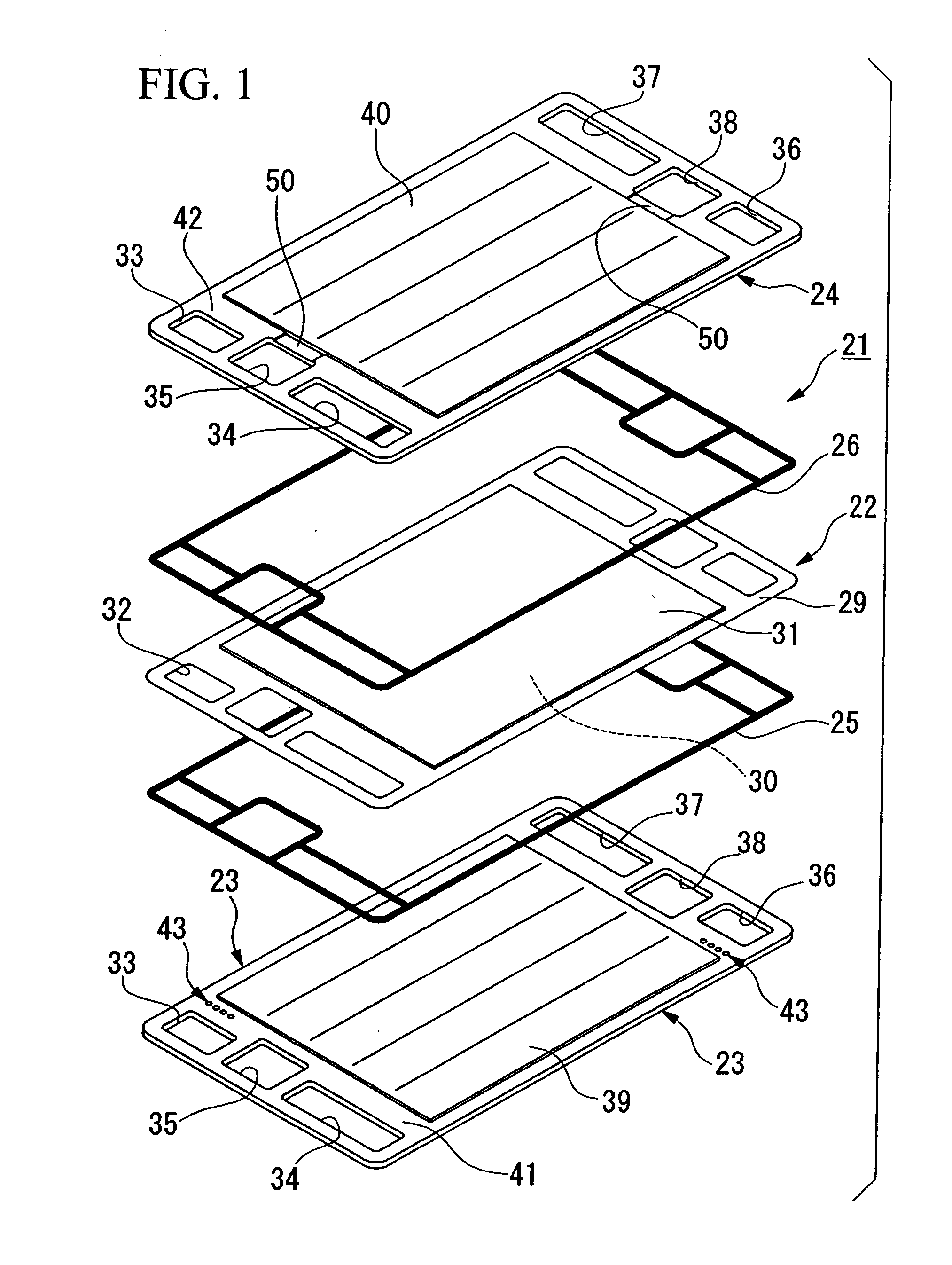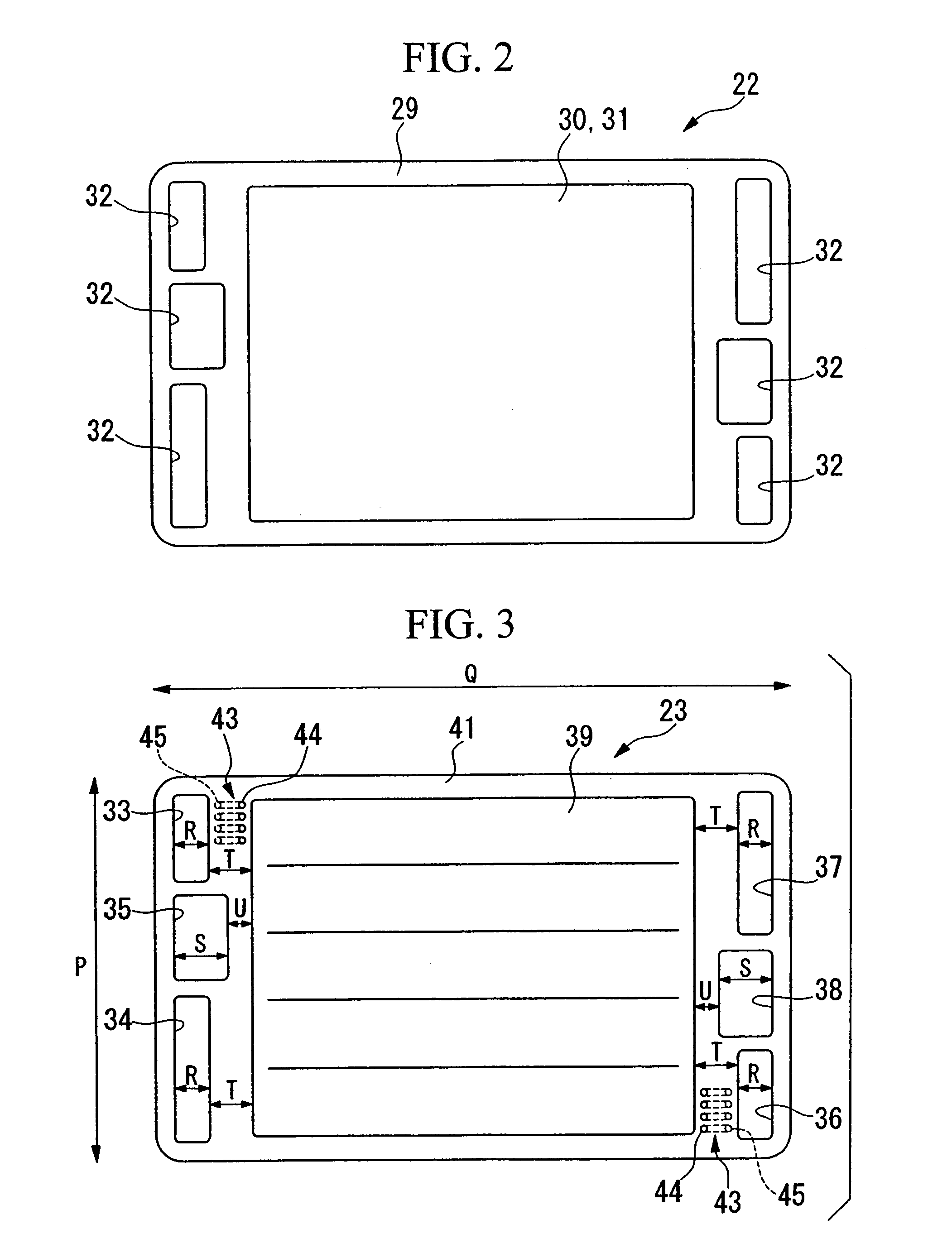Fuel cell and separator thereof
a fuel cell and separator technology, applied in the field of fuel cells, can solve the problems of increased thickness of fuel cell units, difficulty in forming gas sealing members, loss of sealing performance, etc., and achieve the effect of improving sealing performan
- Summary
- Abstract
- Description
- Claims
- Application Information
AI Technical Summary
Benefits of technology
Problems solved by technology
Method used
Image
Examples
Embodiment Construction
[0076] The fuel cell stack according to an embodiment of the present invention will now be described in detail with reference to the drawings.
[0077] As shown in FIG. 12, the fuel cell stack 20 according to the present embodiment is formed by stacking a plurality of fuel cell units 21. As shown in FIG. 1, the fuel cell unit 21 is formed by sandwiching an electrode assembly 22 between a pair of separators 23 and 24. Between the electrode assembly 22 and each of the separators 23 and 24 are disposed respectively gas sealing members 25 and 26. As shown in FIGS. 12 and 13, these gas sealing members 25 and 26 delimit a fuel gas flow passage 27 and an oxidizing gas flow passage 28 so as to seal them on either side of the electrode assembly 22.
[0078] As shown in FIGS. 2 and 12, the electrode assembly 22 has, for example, a solid polymer electrolyte membrane 29 (hereinafter simply referred to as an electrolyte membrane) formed from a perfluorosulfonate polymer, and an anode electrode 30 an...
PUM
| Property | Measurement | Unit |
|---|---|---|
| thickness | aaaaa | aaaaa |
| thickness | aaaaa | aaaaa |
| planar area | aaaaa | aaaaa |
Abstract
Description
Claims
Application Information
 Login to View More
Login to View More - R&D
- Intellectual Property
- Life Sciences
- Materials
- Tech Scout
- Unparalleled Data Quality
- Higher Quality Content
- 60% Fewer Hallucinations
Browse by: Latest US Patents, China's latest patents, Technical Efficacy Thesaurus, Application Domain, Technology Topic, Popular Technical Reports.
© 2025 PatSnap. All rights reserved.Legal|Privacy policy|Modern Slavery Act Transparency Statement|Sitemap|About US| Contact US: help@patsnap.com



